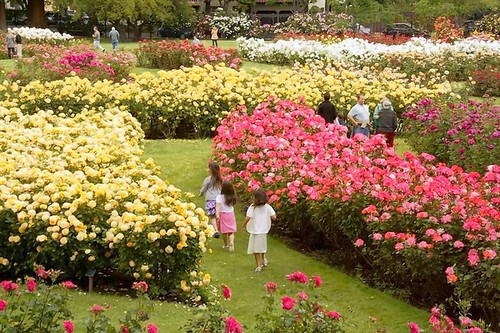Citizen self-help (continued)
Governing Magazine has an interesting story, "Student Solutions to Environmental Problems Save Governments Money," about a school-based initiative in Alaska, where for more than 10 years, there has been a project planning process focused on environmental issues. From the article:
Last year, Alaska Gov. Sean Parnell signed a bill allowing municipalities to offer tax exemptions on residential renewable energy upgrades. The new law wasn’t a legislator’s idea, though. It came from a high school freshman. The legislation, an amendment that will make it more affordable for Alaskans to install solar panels or erect wind turbines, was crafted by a 15-year-old student named Freya Chay.
Chay’s idea was the result of a student competition called Caring for the Kenai (CFK), which encourages young people to come up with ways to improve their local environment and better prepare their community for a natural disaster. CFK is more than a contest. It’s a cooperative effort among schools, governments, businesses and environmental groups to use young minds to solve some of the region’s most pressing environmental problems. It’s also part of the high school curriculum, and meets state and national standards for science and language arts.
In college I used to marvel and how many thousands of student hours were spent writing papers, which nothing happened with. Same goes for all the student papers done at the local colleges and universities in the DC region--little of the work is harvested and retained. On the other hand, has an annual conference for the urban studies department, where student projects are presented to government officials and the public. See the past blog entry, "Idea: College student urban research conference."
But this is for junior high and high school students. Talk about making "community service" requirements actionable and substantive...
And the Los Angeles Times reports, in "Blighted by cutbacks, rose garden is reborn under volunteers' care," about how the San Jose Municipal Rose Garden, is a case study in citizen self-help when in response to budget cuts, thousands of people helped to restore the weed-choked park, and continue to maintain it today.

The San Jose Municiplal Rose Garden on Mother's Day 2011 at the height of the garden's first bloom. Six years ago, the garden which is the horticultural heart of the Silicon Valley, was on "rose probation." The weeds were higher than the flowers. Beds were dry and cracked. The herbicide the city was using to kill weeds was taking out prize blooms as collateral damage. By December, 2010, that very same rose garden was voted America's best and turned into a case study for how to keep municipal gardens alive when city budgets have been pruned to death. (Photo: Terry Reilly / Friends of the San Jose Rose Garden.)
Labels: civic engagement, participatory democracy and empowered participation, provision of public services, public education/K-12, self-help, university-community revitalization



0 Comments:
Post a Comment
<< Home